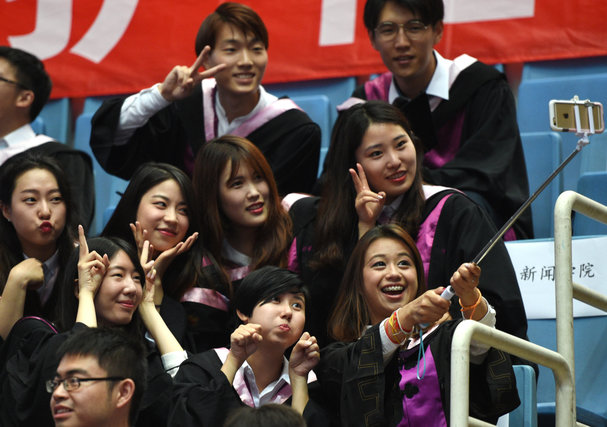
Students at Tsinghua University in Beijing, China's top university in Times Higher Education Asia University Rankings 2018.
Credit: Xinhua / Alamy Stock Photo
The rise and rise of Chinese universities
China climbs the THE Asian university rankings, but Singapore is still first.
7 February 2018

Xinhua / Alamy Stock Photo
Students at Tsinghua University in Beijing, China's top university in Times Higher Education Asia University Rankings 2018.
Chinese universities hold four out five of the top spots in the Times Higher Education Asia University Rankings 2018, released at an Asian universities summit in Shenzhen on 7 February 2018.
Tsinghua University overtook its local rivals for second place, just below leading incumbent, National University of Singapore. Other top-five Chinese universities included Peking University, The University of Hong Kong, and Hong Kong University of Science and technology.
Universities in the annual rankings are assessed on 13 performance indicators in 5 key areas: teaching, research, citations, international outlook and industry income. To account for the higher representation of younger universities in Asia compared to the rest of the world, weightings for specific criteria in the regional rankings were modified from the global calculations: research productivity, research income and industry income counted for more, while teaching and research reputation counted for less.
While China maintains a similarly outsized presence in the Nature Index, the players dabble in a bit of musical chairs. Unlike the THE, the index ranks institutions on one key criteria — their contribution to the authorship of papers in high-quality journals. Positions of institutions can therefore vary widely between the two rankings because of the different inclusion criteria.
In a Nature Index analysis of academic institutions in the 20 countries included in THE rankings, The University of Tokyo was the top-positioned academic institution in Asia, and the National University of Singapore only just made it into the top 10. Peking University took the lead among the Chinese contingent, at second place, followed by Nanjing University, Tsinghua University and the University of Science and Technology of China.
The mix of universities in the top 100 also varies between the two rankings, with fewer countries or regions represented in the index, but China accounting for a larger share. There were 57 Chinese universities in the index list, compared to 31 in the THE analysis. And 16 Japanese institutions appeared in the index, compared to 11 in the THE. A total of eight countries or regions are represented in the index top 100, compared to 17 in the THE, including one institution each from Thailand, Pakistan, Jordan, Lebanon and Qatar.
Source: Nature Index & Times Higher EducationData analysis by Bo Wu.
